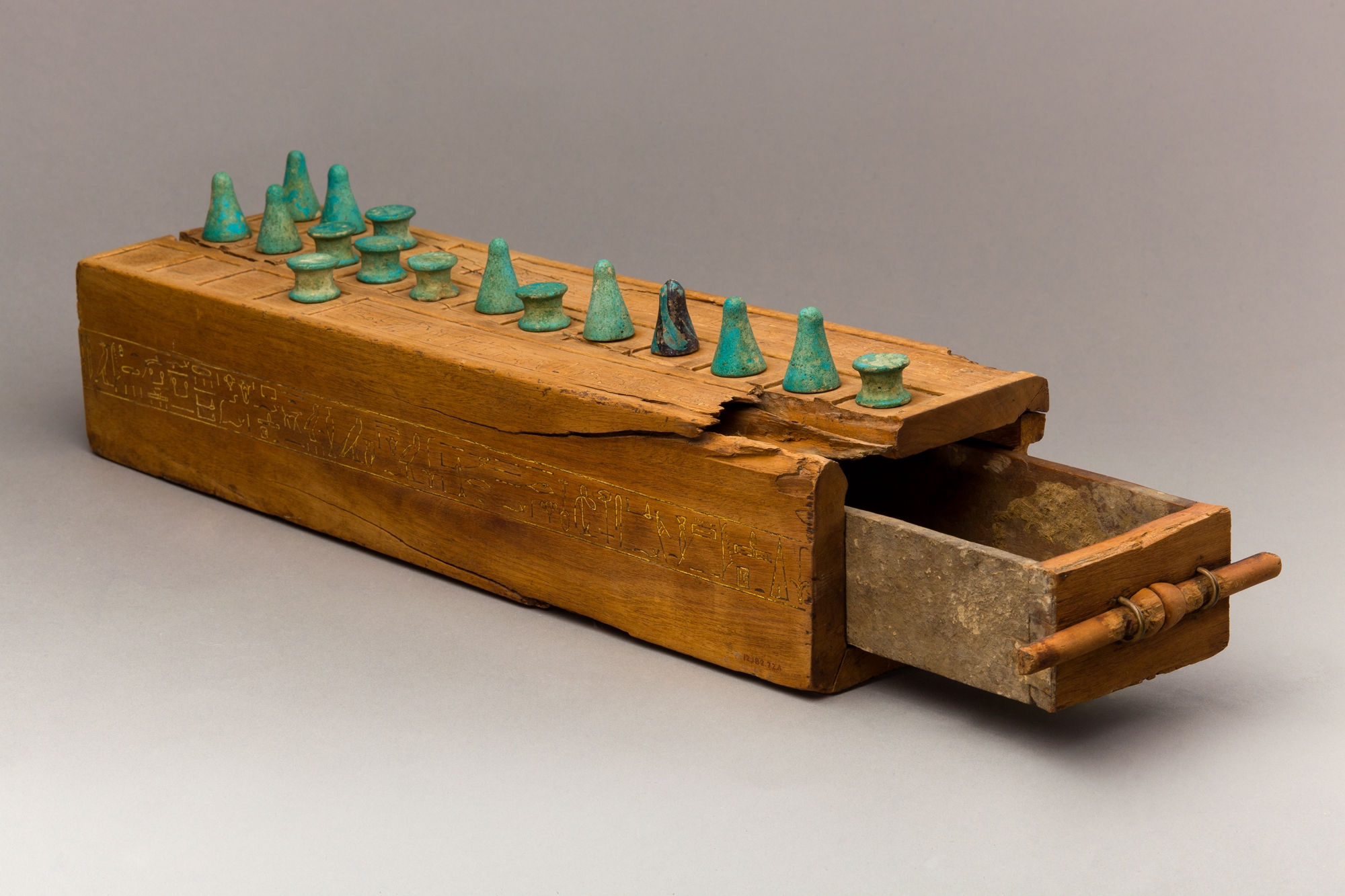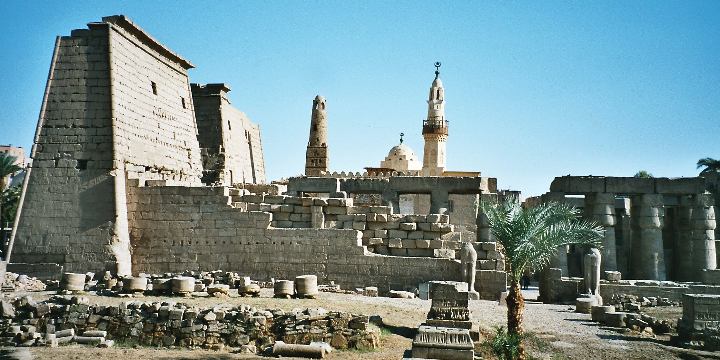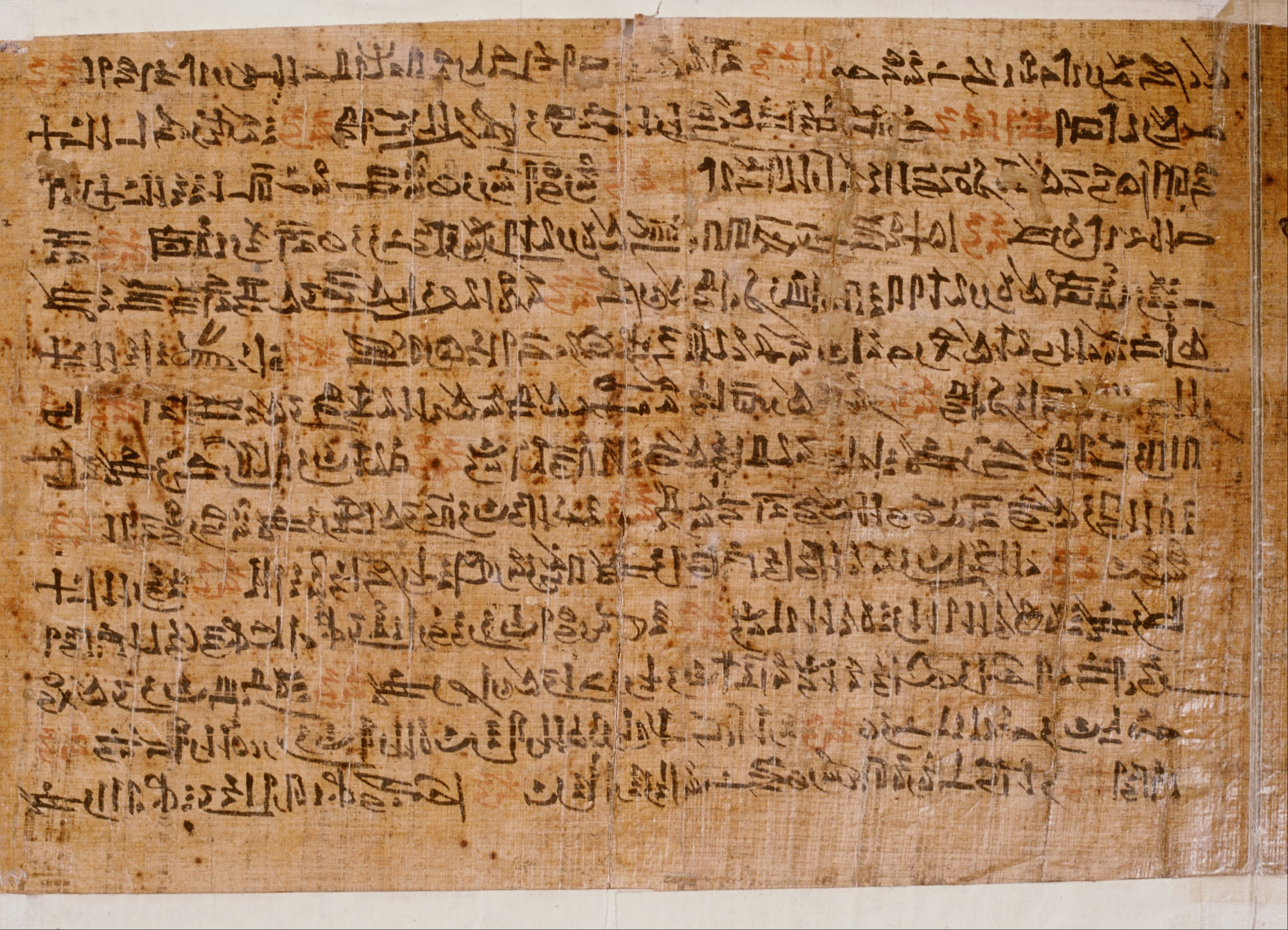|
Abu Ballas
Abu Ballas (the pottery hill) is an archaeological site in the Libyan Desert of Egypt. It lies about south-west of the Dakhla Oases and consists of two isolated sandstone cones in the otherwise flat desert. Both hills are covered with Egyptian pottery. These vessels were at the beginning of the 20th century often well preserved, but are today - due to modern tourism - very much destroyed. The site was discovered in 1918 and 1923. More recent research was undertaken in the last years. The area is name giver for the geological Abu Ballas formation. Neolithic Occupation Scholars suggest, that the Abu Ballas area has been occupied from about 8700 BP to about 5700 BP. They blame environmental conditions for a sudden cessation of human occupation there. The Abu Ballas Trail The nature of this site remained for a long time mysteries. More recent research has shown that the site was a station on an ancient desert road, called ''Abu Ballas Trail'', that connected the Dakla Oasis with t ... [...More Info...] [...Related Items...] OR: [Wikipedia] [Google] [Baidu] |
New Valley Governorate
New Valley Governorate or El Wadi El Gedid Governorate ( ar, محافظة الوادي الجديد , ) is one of the governorates of Egypt. It is in the southwestern part of the country, in the south of Egypt Western Desert (part of the Sahara Desert), between the Nile, northern Sudan, and southeastern Libya. Consisting of roughly half of Egypt's area, this spacious governorate is the country's largest and most sparsely populated, and one of the biggest subnational divisions on the African continent, as well as the world. At 440,098 square kilometers in area, New Valley Governorate is just slightly larger than the country of Iraq. The capital is at the Kharga Oasis. New Valley Governate is named after the New Valley Project, which aims to irrigate parts of the Western Desert. Municipal divisions The governorate is divided into municipal divisions with a total estimated population as of January 2023 of 265,003. In the case of New Valley governorate, there is on ... [...More Info...] [...Related Items...] OR: [Wikipedia] [Google] [Baidu] |
Senet
Senet or senat ( egy, znt, translation=passing; cf. Coptic language, Coptic ⲥⲓⲛⲉ /sinə/ "passing, afternoon") is a board game from ancient Egypt. The earliest representation of senet is dated to E from the Mastaba of Hesy-Re, while similar boards and hieroglyphic signs are found even earlier. The game fell out of use following the Egypt (Roman province), Roman period, and its original rules are the subject of conjecture. History Fragmentary boards that could be senet have been found in First dynasty of Egypt, First Dynasty burials in Egypt, E. The first unequivocal painting of this ancient game is from the Third Dynasty tomb of Hesy-Ra, Hesy (c. 2686–2613 BCE). People are depicted playing senet in a painting in the tomb of Rashepes, as well as from other tombs of the Fifth and Sixth Dynasties (c. 2500 BCE). The oldest intact senet boards date to the Middle Kingdom of Egypt, Middle Kingdom, but graffiti on Fifth Dynasty of Egypt, Fifth and Sixth Dynasty of Egypt, Six ... [...More Info...] [...Related Items...] OR: [Wikipedia] [Google] [Baidu] |
Caves Of Egypt
A cave or cavern is a natural void in the ground, specifically a space large enough for a human to enter. Caves often form by the weathering of rock and often extend deep underground. The word ''cave'' can refer to smaller openings such as sea caves, rock shelters, and grottos, that extend a relatively short distance into the rock and they are called ''exogene'' caves. Caves which extend further underground than the opening is wide are called ''endogene'' caves. Speleology is the science of exploration and study of all aspects of caves and the cave environment. Visiting or exploring caves for recreation may be called ''caving'', ''potholing'', or ''spelunking''. Formation types The formation and development of caves is known as ''speleogenesis''; it can occur over the course of millions of years. Caves can range widely in size, and are formed by various geological processes. These may involve a combination of chemical processes, erosion by water, tectonic forces, microorganism ... [...More Info...] [...Related Items...] OR: [Wikipedia] [Google] [Baidu] |
New Valley Governorate
New Valley Governorate or El Wadi El Gedid Governorate ( ar, محافظة الوادي الجديد , ) is one of the governorates of Egypt. It is in the southwestern part of the country, in the south of Egypt Western Desert (Egypt), Western Desert (part of the Sahara Desert), between the Nile, northern Sudan, and southeastern Libya. Consisting of roughly half of Egypt's area, this spacious governorate is the country's largest and most sparsely populated, and one of the List of country subdivisions by area, biggest subnational divisions on the African continent, as well as the world. At 440,098 square kilometers in area, New Valley Governorate is just slightly larger than the country of Iraq. The capital is at the Kharga Oasis. New Valley Governate is named after the New Valley Project, which aims to irrigate parts of the Western Desert. Municipal divisions The governorate is divided into Subdivisions_of_Egypt#Municipal_divisions, municipal divisions with a total est ... [...More Info...] [...Related Items...] OR: [Wikipedia] [Google] [Baidu] |
Saharan Rock Art
Saharan rock art is a significant area of archaeological study focusing on artwork carved or painted on the natural rocks of the central Sahara desert. The rock art dates from numerous periods starting years ago, and is significant because it shows the culture of ancient African societies. The paintings and carvings of the Sahara are endangered, and vulnerable rock art on uncovered rock has already disappeared. Organizations, such as the Trust for African Rock Art, are researching and recording as much information about Saharan rock art as possible, while raising awareness of threats to the art itself. Archaeological sites Important regions and sites include: *Cave of Swimmers and Cave of Beasts caves area, Gilf Kebir area, Egypt *Tibesti, Chad: Also known as Tibesti Massif or Tibesti Mountains located in central Sahara, extending from Niger and Libya. The mountains are volcanic and are approximately long and wide. The rock art that exists in these mountains was created befor ... [...More Info...] [...Related Items...] OR: [Wikipedia] [Google] [Baidu] |
1918 Archaeological Discoveries
This year is noted for the end of the First World War, on the eleventh hour of the eleventh day of the eleventh month, as well as for the Spanish flu pandemic that killed 50–100 million people worldwide. Events Below, the events of World War I have the "WWI" prefix. January * January – 1918 flu pandemic: The "Spanish flu" (influenza) is first observed in Haskell County, Kansas. * January 4 – The Finnish Declaration of Independence is recognized by Russian Soviet Federative Socialist Republic, Soviet Russia, Sweden, German Empire, Germany and France. * January 9 – Battle of Bear Valley: U.S. troops engage Yaqui people, Yaqui Native American warriors in a minor skirmish in Arizona, and one of the last battles of the American Indian Wars between the United States and Native Americans. * January 15 ** The keel of is laid in Britain, the first purpose-designed aircraft carrier to be laid down. ** The Red Army (The Workers and Peasants Red Army) is formed in ... [...More Info...] [...Related Items...] OR: [Wikipedia] [Google] [Baidu] |
Populated Places Disestablished In The 6th Millennium BC
Population typically refers to the number of people in a single area, whether it be a city or town, region, country, continent, or the world. Governments typically quantify the size of the resident population within their jurisdiction using a census, a process of collecting, analysing, compiling, and publishing data regarding a population. Perspectives of various disciplines Social sciences In sociology and population geography, population refers to a group of human beings with some predefined criterion in common, such as location, race, ethnicity, nationality, or religion. Demography is a social science which entails the statistical study of populations. Ecology In ecology, a population is a group of organisms of the same species who inhabit the same particular geographical area and are capable of interbreeding. The area of a sexual population is the area where inter-breeding is possible between any pair within the area and more probable than cross-breeding with ... [...More Info...] [...Related Items...] OR: [Wikipedia] [Google] [Baidu] |
Populated Places Established In The 9th Millennium BC
Population typically refers to the number of people in a single area, whether it be a city or town, region, country, continent, or the world. Governments typically quantify the size of the resident population within their jurisdiction using a census, a process of collecting, analysing, compiling, and publishing data regarding a population. Perspectives of various disciplines Social sciences In sociology and population geography, population refers to a group of human beings with some predefined criterion in common, such as location, race, ethnicity, nationality, or religion. Demography is a social science which entails the statistical study of populations. Ecology In ecology, a population is a group of organisms of the same species who inhabit the same particular geographical area and are capable of interbreeding. The area of a sexual population is the area where inter-breeding is possible between any pair within the area and more probable than cross-breeding with in ... [...More Info...] [...Related Items...] OR: [Wikipedia] [Google] [Baidu] |
New Kingdom
New is an adjective referring to something recently made, discovered, or created. New or NEW may refer to: Music * New, singer of K-pop group The Boyz Albums and EPs * ''New'' (album), by Paul McCartney, 2013 * ''New'' (EP), by Regurgitator, 1995 Songs * "New" (Daya song), 2017 * "New" (Paul McCartney song), 2013 * "New" (No Doubt song), 1999 *"new", by Loona from '' Yves'', 2017 *"The New", by Interpol from ''Turn On the Bright Lights'', 2002 Acronyms * Net economic welfare, a proposed macroeconomic indicator * Net explosive weight, also known as net explosive quantity * Network of enlightened Women, a conservative university women's organization * Next Entertainment World, a South Korean film distribution company Identification codes * Nepal Bhasa language ISO 639 language code * New Century Financial Corporation (NYSE stock abbreviation) * Northeast Wrestling, a professional wrestling promotion in the northeastern United States Transport * New Orleans Lakefront Ai ... [...More Info...] [...Related Items...] OR: [Wikipedia] [Google] [Baidu] |
Second Intermediate Period
The Second Intermediate Period marks a period when ancient Egypt fell into disarray for a second time, between the end of the Middle Kingdom and the start of the New Kingdom. The concept of a "Second Intermediate Period" was coined in 1942 by German Egyptologist Hanns Stock. It is best known as the period when the Hyksos people of West Asia made their appearance in Egypt and whose reign comprised the 15th Dynasty, which, according to Manetho's ''Aegyptiaca'', was founded by a king by the name of Salitis. End of the Middle Kingdom The 12th Dynasty of Egypt came to an end at the end of the 19th century BC with the death of Queen Sobekneferu (1806–1802 BC).Kim S. B. Ryholt, ''The Political Situation in Egypt during the Second Intermediate Period, c. 1800–1550 B.C.'', Museum Tusculanum Press, Carsten Niebuhr Institute Publications 20. 1997, p.185 Apparently she had no heirs, causing the 12th Dynasty to come to a sudden end, and, with it, the Golden Age of the Middle Kin ... [...More Info...] [...Related Items...] OR: [Wikipedia] [Google] [Baidu] |
First Intermediate Period
The First Intermediate Period, described as a 'dark period' in ancient Egyptian history, spanned approximately 125 years, c. 2181–2055 BC, after the end of the Old Kingdom. It comprises the Seventh (although this is mostly considered spurious by Egyptologists), Eighth, Ninth, Tenth, and part of the Eleventh Dynasties. The concept of a "First Intermediate Period" was coined in 1926 by Egyptologists Georg Steindorff and Henri Frankfort. Very little monumental evidence survives from this period, especially from the beginning of the era. The First Intermediate Period was a dynamic time in which rule of Egypt was roughly equally divided between two competing power bases. One of the bases was at Heracleopolis in Lower Egypt, a city just south of the Faiyum region, and the other was at Thebes, in Upper Egypt. It is believed that during that time, temples were pillaged and violated, artwork was vandalized, and the statues of kings were broken or destroyed as a result of the pos ... [...More Info...] [...Related Items...] OR: [Wikipedia] [Google] [Baidu] |
Egypt
Egypt ( ar, مصر , ), officially the Arab Republic of Egypt, is a transcontinental country spanning the northeast corner of Africa and southwest corner of Asia via a land bridge formed by the Sinai Peninsula. It is bordered by the Mediterranean Sea to the north, the Gaza Strip of Palestine and Israel to the northeast, the Red Sea to the east, Sudan to the south, and Libya to the west. The Gulf of Aqaba in the northeast separates Egypt from Jordan and Saudi Arabia. Cairo is the capital and largest city of Egypt, while Alexandria, the second-largest city, is an important industrial and tourist hub at the Mediterranean coast. At approximately 100 million inhabitants, Egypt is the 14th-most populated country in the world. Egypt has one of the longest histories of any country, tracing its heritage along the Nile Delta back to the 6th–4th millennia BCE. Considered a cradle of civilisation, Ancient Egypt saw some of the earliest developments of writing, agriculture, ur ... [...More Info...] [...Related Items...] OR: [Wikipedia] [Google] [Baidu] |








